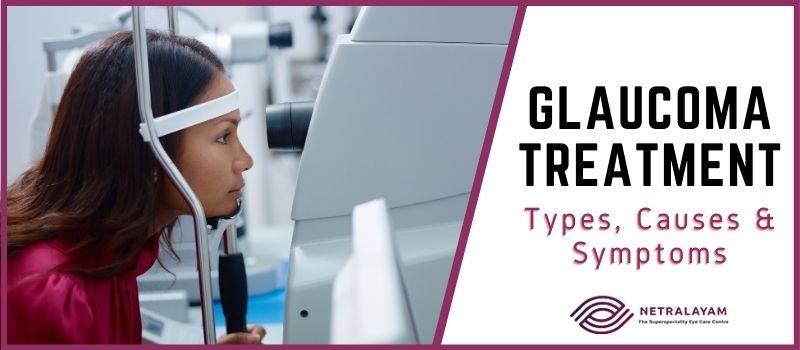Committed to Eye Care with Compassion, Technology and Competency
Committed to Eye Care with Compassion, Technology and Competency

10/26/2020
Glaucoma is a group of eye disorder that can cause blindness and vision loss by damaging the optic nerve of the eye. It is the second major cause of blindness all over the world after cataract. The cause of glaucoma is the elevated pressure inside the eye.
There are two major types of glaucoma, namely narrow-angle glaucoma (angle-closure glaucoma) and open-angle glaucoma. Here, the "angle" refers to the drainage pathway of the watery fluid inside the eye called aqueous humour that is continuously produced inside the eye.
In open-angle glaucoma, the fluid in your eye will have access to the drainage angle, whereas in narrow-angle glaucoma, the drainage angle will be blocked, and the fluid may not be able to drain through it. Congenital glaucoma is another form of glaucoma that is often present at birth. It is characterized by large and hazy cornea in newborn, associated with watering and photophobia.
Most forms of glaucoma usually have no symptoms or pain until noticeable vision loss happens. It is most often detected by ophthalmologists while doing a routine eye check-up. However, in acute angle-closure glaucoma, you may experience sudden symptoms such as blurry vision, severe eye pain, halos around lights, vomiting, and nausea. If you have any of these symptoms, consult an eye specialist immediately to avoid permanent vision loss.
Ophthalmologists can check for glaucoma as a part of a complete dilated eye examination. The procedure is easy and painless. Your doctor will give you some eye drops to dilate (widen) your pupil and then examine your eyes for glaucoma and any other eye problem.
Glaucoma impairs your vision and can lead to complete loss of vision if left untreated. Ophthalmologists all around the world offer different types of treatment for glaucoma. It is crucial to start treatment immediately if you have glaucoma. Some common treatments for glaucoma are:
Prescription eye drops that reduces your eye pressure and thus prevent further optic nerve damage are the most common treatment for glaucoma.
Lasers can lower pressure in your eye by draining the aqueous humour out of your eye. This is a simple in-office procedure.
If laser treatments and medicines don’t work, surgery is the next treatment option for glaucoma to drain out the fluid from your eye.
If you are diagnosed with glaucoma, get your family members tested for the same since it can run in families.
Glaucoma is often treated by lowering your intraocular pressure. The treatment consists of oral medications, prescription of eye drops, laser treatment, glaucoma surgery, or a combination of any of these depending on the severity of the condition.
It is found that even with treatment, about 15% of cases can lead to blindness in one eye in nearly twenty years.
Unfortunately, there is no cure for glaucoma. However, it can be controlled with proper treatment.
You should avoid consuming foods high in trans fat if you have glaucoma as they can damage your optic nerve. For example, avoid baked goods such as cakes, cookies, donuts, and fried items to prevent worsening your glaucoma.
If you are looking for the best eye doctor in Kolkata for glaucoma treatment, make sure to give us a call. We will be happy to help you. We have the best options for glaucoma treatment in Kolkata.
Comments are closed
